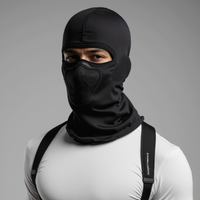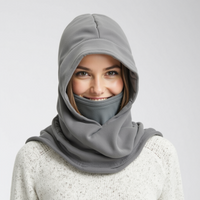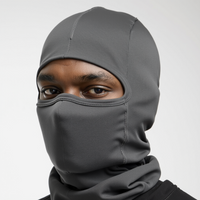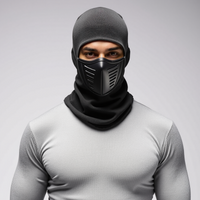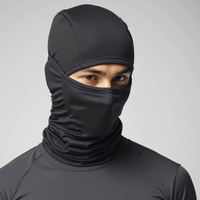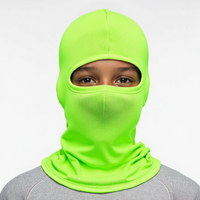Balaclava ski
Choose the best protection on the slopes.
Our ski balaclavas are designed for ultimate protection and performance style. Don't let the cold spoil your fun on the slopes - equip yourself now with a ski balaclava tailored to your needs and enjoy your winter adventures to the full.
Balaclava Ski - Protection and style for your mountain adventures.
Protect your face from the cold while making a style statement with our exclusive collection of ski balaclavas. Perfect for skiers, snowboarders and winter sports enthusiasts, our balaclavas combine comfort, performance and modern design. Designed with breathable and thermal technical materials, they provide optimum protection against icy wind, snow and UV rays, without compromising freedom of movement.
Whether you're looking for a full-face goggle for skiing, a lightweight balaclava for moderate temperatures or an anti-humidity thermal balaclava, we've got the right model to take you out on the slopes. Available in a range of styles and colors, our ski balaclavas are both functional and fashionable, adapting to every body type.
Why choose our ski balaclavas ?
- Thermal insulation : Stay warm even in extreme temperatures.
- Optimum breathability : Wicks away moisture for long-lasting comfort.
- Versatility : Ideal for skiing, snowboarding and other winter activities.
- Unique style : Adopt a modern look that won't go unnoticed on the slopes.
Ready to face the winter with foolproof protection ?
Explore our range and find the perfect ski balaclava for your next adventure!
In addition to our ski models, discover our motorcycle balaclava collection, ideal for bikers looking for effective protection against wind and weather.
FAQ
What's the difference between a balaclava and a ski mask ?
- A balaclava covers the entire head, face and neck, offering complete protection against cold and wind. It can have different openings (full, partially uncovered or adjustable) and is often used for maximum insulation under a helmet.
- A ski mask, on the other hand, mainly covers the lower part of the face (nose, mouth, sometimes cheeks) and is often worn with a cap or helmet. It is designed to provide better breathability and prevent fogging up of ski goggles.
How to choose the right balaclava for skiing ?
To choose the right ski balaclava, there are several criteria to consider:
- Materials: Opt for technical fabrics such as polyester, merino wool or fleece to ensure warmth and breathability.
- Fit: A balaclava should fit snugly, but not too tightly, to allow helmets to be worn and ensure comfort.
- Climatic conditions: For very low temperatures, a thick balaclava is preferable, while a lighter model is suitable for less rigorous conditions.
- Ventilation: Some models feature breathable zones to prevent moisture build-up.
What materials are recommended for a ski balaclava ?
The materials recommended for a ski balaclava should offer a good balance of warmth, breathability and moisture wicking. Popular options include:
- Merino wool: Naturally warm, breathable and odor-resistant, ideal for long days on the slopes.
- Fleece: Provides excellent thermal insulation while being soft and comfortable.
- Polyester/elastane: Lightweight, breathable and stretchy, perfect for intensive sports use.
- Softshell: Offers wind protection and water resistance.
These choices depend on the climate and the type of activity practiced on the ski slopes




